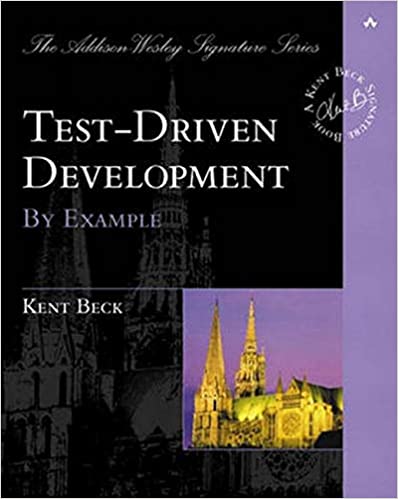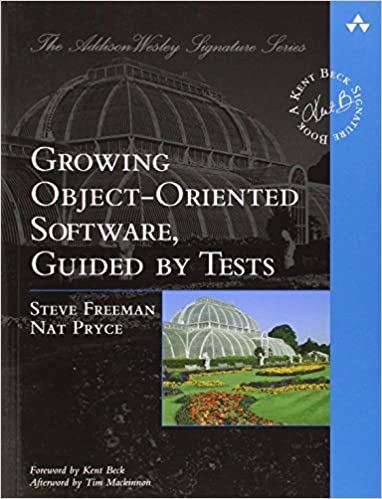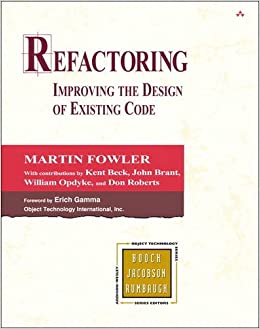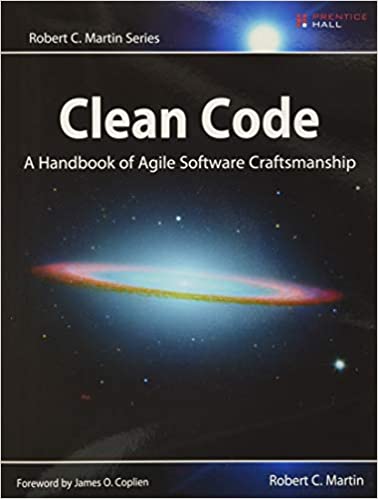Testing can seem daunting, but it doesn’t have to be.
Unit testing provides a simple way of testing the behavior of a single unit of software. It is a very useful practice, so programmers worldwide have been looking for ways to make it better. The result of their work are books on unit testing.
This article is a list of seven phenomenal books on unit testing in C#:
- The Art of Unit Testing: with examples in C#
- Test-Driven Development: By Example
- Working Effectively with Legacy Code
- Growing Object-Oriented Software, Guided by Tests
- Unit Testing Principles, Practices, and Patterns
- Refactoring: Improving the Design of Existing Code
- Clean Code: A Handbook of Agile Software Craftsmanship
They’re all great reads, and they all offer advice on how to write unit tests and better production code. I hope you enjoy this list and find it useful.
The Art of Unit Testing: with examples in C#

Whether you work in a greenfield project or a legacy one, unit testing is one of the best ways to improve your code. And as a developer, you are in a great position to improve your skills in this area – whether through better code coverage, more thorough testing, or more confidence in your code and its test suite.
The Art of Unit Testing will teach you how to create, maintain, and use automated tests. With this hands-on guide, you’ll learn how to design and implement a good unit test through a series of practical examples. Each chapter is focused on a different aspect of unit testing, so you can start easily and build up your knowledge through practical application.
This book will guide you, step-by-step, through the process of creating well-designed unit tests and mastering mocks and stubs. You’ll learn how to go from simple to robust test sets and learn best practices. You’ll also get a deep understanding of what is a test double, what is a mock and a stub, and when they should be used.
The Art of Unit Testing is a guide to the craft of unit testing through the eyes of a developer who has learned how to get the most out of the process over the course of 20 years. Test early, test often and test automatically.
Test Driven Development: By Example

If you’re new to test-driven development (TDD), the first thing you’ll learn is that it’s not rocket science.
The process of TDD is quite simple: for new functionality, write a failing test method, make the test pass by implementing the feature, and refactor the code to the production level.
Test-Driven Development: By Example is a quick read that teaches you test-driven development (TDD) and many important programming concepts. It presents TDD in a practical, down-to-earth way so that you can start building your own applications with TDD straightaway. The book also includes many helpful examples of tests and code.
This book is an essential resource for all programmers who want to learn and use the test-driven development (TDD) and refactoring techniques that make test-first programming possible. With this book, you’ll quickly learn the three core disciplines of test-first programming, red-green-refactor, and how to apply these disciplines to actual code. You’ll learn how to write tests first, how to refactor safely, and how to design a great internal architecture for your code.
Working Effectively with Legacy Code

The legacy code paradox: The legacy code is too expensive to fix, yet it is too expensive to leave unchanged.
As a result, the software industry is locked into a pattern of continuously maintaining internal applications at great cost.
Working Effectively with Legacy Code is a book that shows you how to get the most out of legacy code. It will help you improve quality, reduce maintenance costs, and make your code more flexible so that you and your colleagues can easily make changes in the future.
Working Effectively with Legacy Code is packed with practical techniques and useful advice to help you deal with every software developer’s problem when working with an aging codebase. You’ll find techniques for correcting flaws in legacy code, for safely working around missing pieces, and for upgrading your old code to support testing.
This book is an indispensable resource that will make your days easier and your software change efforts more successful.
Growing Object-Oriented Software, Guided by Tests

TDD is a great way to reduce defects in software, but it’s not easy to do. It requires a different way of thinking and involves a specialized set of tools and techniques. Fortunately, you can master this valuable practice with the proper guidance and make it part of your normal development process.
Growing Object-Oriented Software, Guided by Tests explains how to combine test-driven development with various agile practices to produce a continual flow of working software throughout the project’s life cycle. You’ll learn how to build a software system using an agile approach that addresses the entire life cycle, from initial analysis and modeling through deployment, with a strong emphasis on automated testing.
The book brings all the pieces of the TDD puzzle together, showing how tests drive the design of object-oriented systems. In addition, this book describes how to use mock objects and test-driven design to tackle complex problems. Referencing many examples from real projects, this book is essential reading for any developer interested in or practicing TDD.
This book is perfect for developers, testers, and project managers who are looking for a lightweight introduction to the agile practices of test-driven development (TDD) and object-oriented design.
Unit Testing Principles, Practices, and Patterns

Unit testing is the process of determining if individual units of source code are working as expected by:
- Verifying that the program logic is correct,
- Identify the areas of code that need to be improved or fixed
- Make sure that new changes haven’t broken existing functionality.
This book will give you a practical approach to pragmatic unit testing. It is intended for both novice and experienced programmers. It starts by teaching you the basics of unit testing through a series of hands-on tutorials using C#.
Next, this book covers the modern best practices of unit testing patterns with C#. It also talks about integration testing and mocking in C#. You will also learn when to use a mock object, but also when you should avoid mocking.
This book is relatively new, released in 2020. In a way, it continues where The Art of Unit Testing book stops, and it offers a modern approach to unit testing.
Refactoring: Improving the Design of Existing Code

A software developer’s life is never easy. We spend hours and hours each week working to build the best possible software for our clients, and all the while, we have this nagging feeling that the code we’re writing could always (and should) be better.
So how do we make it better?
By refactoring the existing code.
Refactoring is a process of changing the internal code structure without changing its external behavior. Refactoring helps make code more readable and less prone to error. This book will teach you how to refactor code to make it better – easier to maintain, easier to read, easier to debug, and easier to change.
Even this book is not about unit testing; it is impossible to work on a long-term project without investing the time into refactoring the existing code. With refactoring, you improve code maintainability and testability.
Also, note that the first version of this book is written in Java, and the second uses Javascript. But you will easily understand all the examples even if you are not a Java programmer.
This book is a practical, hands-on guide to the refactoring process. Refactoring has been widely recognized as an important and necessary part of software development, yet finding detailed information on the process has not always been easy. This book is written for software developers who want to improve their skills in this crucial area.
It will also help you design new applications, and better prepare you to architect highly maintainable and extensible software systems.
Clean Code: A Handbook of Agile Software Craftsmanship

Written for developers at all levels, Clean Code offers rules and principles on how to write better code.
It will make you a better programmer—one who writes code that is more robust, easier to understand, more efficient, and with fewer errors.
This book is not only about unit testing, but it focuses on all aspects of producing a good code. It will also show you how to refactor code applications.
Software is everywhere in our lives. We’ve seen it in our phones, TVs, cars, and watches. We use it to keep our homes running smoothly. We use it to stay in touch with the people we love. As the software that provides the basic functions of our lives becomes increasingly important, it becomes ever more critical that we know what we are doing when we write software.
If your work involves writing code, this book is required reading. Writing clean code is an investment that pays off in fewer errors, better design, and less time debugging. You’ll learn how the craft of software development has evolved and how you can use its best practices in your day-to-day work.
Conclusion
I have presented you a list of 7 phenomenal books on unit testing in C# in this post. These books are written by some of the most renowned software testing experts and will help you to become a better software tester.
I have read all those books, most of them more than once. And I really recommend all of them.
Two other testing books I plan to read are:
so you can expect the updated version of this post after I finish reading them.
